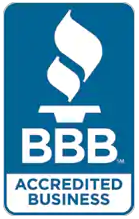Have you ever signed up for a free event and not showed up? How about receiving a complimentary voucher for a meal at a local restaurant and not using it before it expired? On the other hand, has your business ever sponsored an educational program at no-cost to participants, sold out all the free tickets available to reserve seats, and then had only a handful of people attend? Or even start off with a full house but lose almost everyone before the program ended?
If you are nodding “yes” to any of these possibilities, you’ve experienced first-hand how branding a product or service as “free” can sometimes back-fire and devalue an otherwise valuable commodity. Without realizing it, many people distrust the intention behind a product or service offered as “free” and will tend to undervalue the giveaway itself – many times missing out on golden opportunities.
Given a choice between paying for something and acquiring it freely, many of us will say “I’ll take it if it’s free!” The question is: “Will we use it?” Maybe. Or maybe not. Our behavior seems counter intuitive – until we realize our actions are based on the meaning we personally attach to the term “free”. Is it no cost? Or is it no value? And can that perception be changed?
Our perception of an object’s value stems from our prior experiences and immediate need for the item. For some of us, “free” may subconsciously be equated with “no value” because experience has taught us that many organizations will not offer something of real value for nothing. We’ve often heard: “You get what you pay for!” and “There is no such thing as a free lunch; there is always a catch!” Right?
After all, “free giveaways” – aren’t they usually tchotchkes printed with a business logo to promote or market something for the business? “Free events” – aren’t they usually a hook to get us in the door before picking our pockets? For many people, “free” has become a teaser that leads us down a rabbit hole to buy some extravagantly expensive service or product after wasting an hour or two of our valuable time? For these reasons, “free” might be mentally translated as “Buyer beware!” for many of us.
 On the other hand, if our past experiences with “free” was mostly positive, we will attach real value to the product, service, information, or opportunity. For instance, has someone ever paid for your $7 lunch and you walked away feeling like you won the lottery? When we are fortunate enough to be gifted with something “free” that we happen to need at the moment, its value is greatly magnified. We are thrilled to have received such a deal! We immediately perceive and attach value though we paid nothing monetarily.
On the other hand, if our past experiences with “free” was mostly positive, we will attach real value to the product, service, information, or opportunity. For instance, has someone ever paid for your $7 lunch and you walked away feeling like you won the lottery? When we are fortunate enough to be gifted with something “free” that we happen to need at the moment, its value is greatly magnified. We are thrilled to have received such a deal! We immediately perceive and attach value though we paid nothing monetarily.
As savvy business people, we grasp the value of “free”. We know that free webinars and classes that teach us how to run better operations, use financial software, hire and develop our teams, and enhance our leadership skills are all inestimable. We recognize that mentors who give freely of their time to help us become more successful business owners and organizational leaders bestow treasures of immeasurable value.
In fact, we often reap the rewards associated with offering (and receiving) free resources, products and services, educational seminars, sponsored community events, etc. These may include:
- Establishing goodwill and supporting good business relations within our communities;
- Building trust and developing relationships with other businesses, local government, and future customers;
- Solidifying existing relationships with business partners and clients, whether guiding toward or providing extra value at no additional cost;
- Marketing products and services informally, networking, showing off who we are, and providing a sample of what our teams can do to meet their needs and lighten their workloads; and
- Sharing our knowledge and experiences to teach while learning from others.
Clearly, “freebies” can be extremely rewarding for our businesses. At the same time, drawing attendance to “free” events can have its challenges (others are competing for the participants’ time and attention; we have limited giveaways, seats, food, time, etc.) So here are a few tips to create value:
- Choose a topic that’s important and relevant to your audience, not to you. For example: identify ways to help them be more successful as leaders; offer techniques for teams to work smarter, not harder; provide ideas to promote work/life balance, health, career advancement, etc. Do your homework, gather resources to share, and prepare to do your best.
- Be focused. Use the right mix and type of media to target your communications to the folks who are most likely to benefit from your product, service, event, information, etc. A blast to the world may quickly sell tickets, but not necessarily fill seats on the day of the event, wasting precious time and money.
- Be transparent. Emphasize your primary intention is to provide valuable information, services, or products to help them immediately. By clearly stating what’s in it for them and you, what they can expect to get from the experience, people will decide if the value you are freely offering is worth it to them to accept.
- Think exclusivity, and quality over quantity. Start with a small venue and work to ensure those seats are filled to capacity. Use a waiting list and provide an easy way for participants to cancel tickets in case of a change in plans, allowing others on the waiting list to attend.
- Make a good first and lasting impression. Just because it’s a free event doesn’t give you permission to throw the event together the night before, start late, or appear unprepared in any way. People will remember you and the experience you provide. Disrespecting their time is not worth the poor reviews and negative impact on future business.
- Keep your word and earn their trust. Do what you say you will. Don’t try to mislead people by pretending to provide valuable information, product, or service, if your main focus is to make sales via a “semi-free” event. People pick up on insincerity. Similarly, once they see value in your offering, they will remember you, often calling and coming back; they are more likely to pass along recommendations and referrals – and your sales will follow.
Perception is reality and the value of “free” isn’t determined by you or me – but by those we are trying to engage and help. Focus on giving, not receiving. By providing true value with our “free” offerings we can differentiate ourselves. And when it comes to business growth and sustainability – that’s priceless!
Author: Julie Ramdial, President of U Learn Enterprises, Inc.



